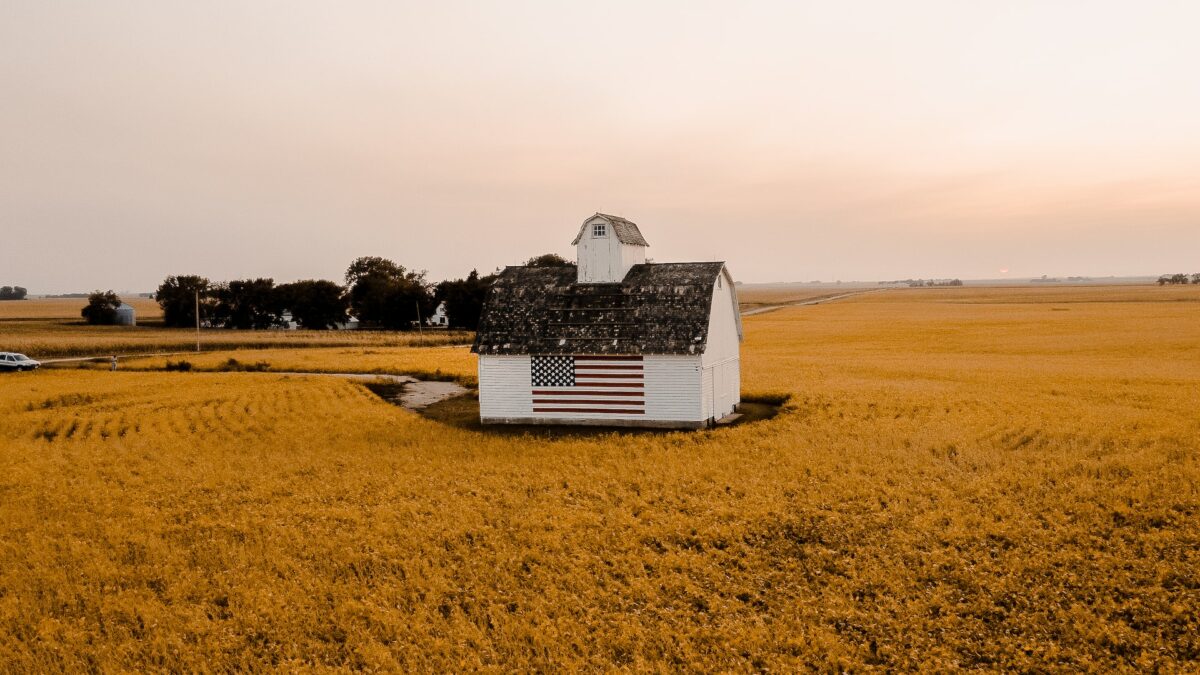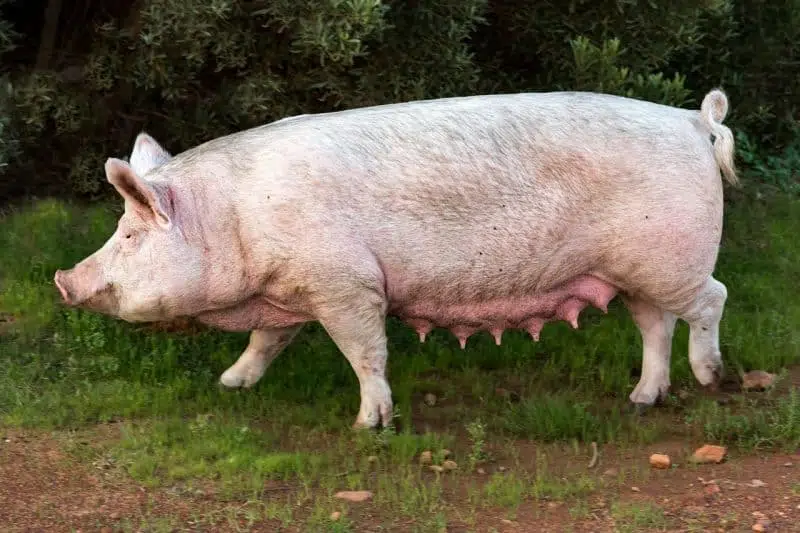Welcome to Animals and Wildlife in Iowa!
Regarding healthcare, infrastructure, and educational opportunities, Iowa is one of the best places to live and the only state in the United States that comes to mind. Iowa is a state in the midwestern region of America.

Read on for more info on the Animals and Wildlife in Iowa. You can jump to any section below.
Animals and Wildlife in Iowa
Iowa has a variety of wildlife, primarily seen in the state’s forested areas. If you visit Iowa’s forested areas, you will encounter animals like coyotes, white-tailed deer, gray and red foxes, and bobcats. Iowa has beautiful lakes, rivers, and streams, allowing aquatic animals to survive in the state. Animals like otters, turtles, bullfrogs, ospreys, and swans live in the river. Blue-winged teal, mallards, and cranes are species of waterfowl.
The shorelines and lakes of Iowa have walleye, catfish, and crappies. Let us tell you about the small native mammals of Iowa, which it is strange but adorable eastern mole, muskrats, otters, and opossums. Other small mammals of Iowa include the short-tailed shrew and the prairie vole.
There are many birds in Iowa; the most famous among them is the bobolink. Bobolink is one of the rarest birds in the country, with striking black and white coloring. It is a grassland prairie bird with this plumage color, the only North American land bird.
An interesting fact about Iowa’s animals is that you will often see mountain lions and moose, but they are not the state’s residents. It is assumed that they must cross over from the neighboring states to find their meal. There are other predators in the state, which include bobcats, foxes, and coyotes. Eastern chipmunks, white-footed mice, eastern squirrels, and deer mice are the native rodents of Iowa’s state.
Nine bat species in the state include the little brown bat, known to be the rarest bat species in the United States.
The Official State Animal of Iowa
American goldfinch (Spinus tritis) is a lovely yellow bird that lives in marshy areas, woods, orchards, and suburban areas and is Iowa’s state animal.
American goldfinchs make their nest in late summer because winter is not their season. They usually feed on insects and seeds.
Where to Find the Top Wild Animals in Iowa
Well, where to find most of Iowa’s animals at a time. But don’t worry, you can enjoy the view of wildlife in Iowa in these places.
- Pike’s Peak State Park
- Manawa Lake State Park
- Goose Lake Wildlife Area
- Wapsi Flats Wildlife Area
Endangered Animals in Iowa
Some of the species in Iowa state have become less in number. Their population is decreasing daily, and they are included in the endangered species list. Some of them are as follows:
• Trumpeter Swan
• Osprey
• Bald Eagle
• Eastern Massasauga Rattlesnake
Mountain lions, bears, and wolves were once part of Iowa state but are no longer its resident population. They used to roam freely, but now they only come for their prey from neighboring states.
The Most Dangerous Animals in Iowa
While knowing there are many wildlife animals in Iowa, you must get scared of the animal attacks, But there have been very few cases of animal attacks, which are minor; Iowa is pretty safe in that sense.
Snakes in Iowa
If you want to see different species of snakes, then you should surely visit Iowa. There are almost 28 species in Iowa, but you don’t have to be scared because most snakes are non-venomous.
Non-venomous snakes include brown snakes, common garter snakes, and western fox snakes. So there are four different kinds of snake species that you should be concerned about, and if you happen to see any of them, the next step for you is to run.
Venomous snakes
Four venomous snakes need attention while being in contact with them, and you need to protect yourself from them. These are
- Coppherheads,
- Massasauga rattlesnakes
- Prairie rattlesnakes
- Timber rattlesnakes.
Like other animals in Iowa that do not attack humans, these four venomous snakes also do not attack humans, but if they bite you and you are left untreated, it could be fatal.
Timber rattlesnake (Crotalus horridus) :
Timber rattlesnakes can reach up to 4 feet. They live in marshy and forest areas often. Their bite could be stingy and can be fatal if not properly treated.
Copperhead (Agkistrodon contortrix):
The venom of the copperhead snake is not dangerous as it does not kill a person, but it can cause a lot of pain that a person may need pain reliever and immediate treatment. Copperhead is the most common snake in the United States, and they live near waterways and streams.
Eastern Massasauga Rattlesnake:
Eastern Massasauga Rattlesnake is on the list of endangered species, and they have very strong venom, but they do not come in contact with humans; if they do so, they never attack a human.
Prairie Rattlesnake (Crotalus viridis):
Prairie Rattlesnake has the most considerable rage in the United States, and their venom is also very dangerous. If he bites any human and that is left untreated, then it could be fatal. Just like Massasauga, it is also threatened by habitat loss.
Other dangerous animals in Iowa include mosquitoes and wood ticks, and they are considered more dangerous than any other animal in Iowa State. The wood ticks and mosquitoes have caused more deaths and illnesses in the state than those venomous snakes and spiders combined.
Iowa State Animals
Let us discuss some of Iowa’s state animals in detail.
Bobolink
Bobolink bird is a sign of spring in bird symbolism. The bird’s scientific name is quite difficult to pronounce Dolichonyx oryzivorus. Their color is often light brown with black streaks and stripes. Their appearance is very unusual.
The female bobolink looks like a sparrow, and the male’s breeding plumage is on the underside of the body, making us identify the male bobolink even when they are flying. In spring, the identification becomes easy because they are the only bird in North America with a paler above and black below. In addition, they can easily crack seeds and nuts because they have conical bills.
Bobolink eats a lot of worms and bugs. Among all the bugs and worms, their favorite worm is the armyworm. Because of that, they are also named ‘armyworm birds”.
Bobolink keeps changing its location according to its breeding season and winter season. So in winter, they are found in South America, and in their breeding season, you will see them in the Northern United States.
You can also locate them in rice pastures and hayfields because they are voracious eaters of grains. So, wherever you see tall grass, get ready to have a glimpse of bobolink cause they can be found in grasslands and wetlands. Prairie and damp meadows were also places for bobolink, but these places are now uncommon.
Bobolink goes to grassland to make their nest, but to your surprise, they do not build it on ant branches or trees. Instead, they choose to make their nest on the ground. They hope that the tall grass may hide their nests from predators, and they easily raise their young ones. They have to make it away from the forest areas because if their nest is close to the forest, it is more prone to the predator‘s attack. The female bobolink makes the whole nest, so the credit goes to the female bobolink alone.
The female bird makes the cup of the nest with stems, and the outer lines are made up of finer blades to protect their eggs. They make their nest in tall grasses, weeds, and shrubs.
Kingsnake
The scientific name of the Eastern king snake is Lampropeltis getula. The scientific name for each species is different. Eastern Kingsnake is yellow with a zig-zag pattern of black scales. They weigh up to four pounds with 36 to 48 inches in length.
Kingsnakes are also known as chain snakes because of the scale pattern on their body. They can swim and climb trees easily. They eat rodents, birds, lizards, snakes, and bird eggs. The grip of these snakes is so firm that they can squeeze their prey to death. You should not be worried about their venom as they are not venomous, but you should be worried about their squeezing. They usually live up to 10 to 15 years.
Six other species of Kingsnake look similar in their appearance, but they live in different places. All these species belong to the family of Colubridae. The other six species of Kingsnake are as follows:
- Common king snake or Eastern kingsnake (Lampropeltis getula)
- California kingsnake (Lampropeltis California)
- Speckled Kingsnake (Lampropeltis holbrooki)
- Desert kingsnake (Lampropeltis Splendida)
- Black king snake or Eastern black kingsnake (Lampropeltis nigra)
- Scarlet Kingsnake (Lampropeltis elapsoides)
The eastern, western, and southern parts of the United States are the living places of Kingsnake. They live in different sections of the United States, and some live in Mexico. Each species looks similar, but its habitat differs from species to species.
They hide under the rocks and tight crevices in the deserts. While in grasslands or forests, they seek shelter in hollow trees and beneath piles of leaves or sticks. The breeding season of Kingsnake is from March to May. However, they are super active in the summer and spring seasons. They also hatch their eggs in the late summer season.
Mealybug
Mealybug is an insect of the Hemiptera order. They are tiny bugs and inject plant disease plant toxins. It also transmits plant diseases.
Mealybugs usually feed on plants and affect them. You can see fuzzy white stuff on the plants that are mealybugs. Other species of mealybug feed on plants like mango, papaya, mulberry, sunflower, grapes, pineapple, ferns, gardenias, mulberry, sunflower, orchids, etc.
Male and female mealybug goes from the same phase of egg to nymph. Their bodies are so soft, unlike other insects. They do not have any shells to cover their soft bodies. They are oval and flat, and waxy.
There are 269 genera of mealybugs, but all are in the suborder Sternorrhnycha, and the superfamily Coccoidea United States holds 275 species.
Mealybugs also damage the wood so you will see them in trees and woods. They can be found in greenhouses and indoor and outdoor plants. They are more likely to make their habitat in moist and warm climates, and when they are outdoors, they choose warm and dry weather.
Some plants are harmful and toxic to the mealybugs and other pests as well. These plants are toxic to other animals and children as well. These plants are as follows:
- Snake Plant
- Jade Plant
- Cast Iron Palm
- Madagascar Dragon Tree
- Chinese Evergreen
There are some home remedies to get rid of the mealybugs from your plants, and these are as follows:
- Wash the plants
- Use rubbing alcohol
- Use liquid soap spray
- Use a neem oil spray
- Biocontrol
Summary of Animals and Wildlife in Iowa
Iowa is well known for agriculture because 85 percent of its land is dedicated to agriculture. The most famous crop of Iowa is corn, which is well known for its yearly state fair.
Although the state is flat farmland, some gently rolling hills remain in Iowa. When we talk about the weather of Iowa, we are talking about all the seasons, which means Iowa is hot and humid in summers and harsh and cold in winters.
The tornadoes you grew up watching in the movies are everyday events in Iowa, along with thunderstorms.
If you liked this article, look at Animas in Arkansas and Animals in Connecticut.
- Explore The Azores - April 22, 2024
- The 4 Best Places to See Jaguars - April 19, 2024
- Wildlife of Sweden - April 19, 2024








